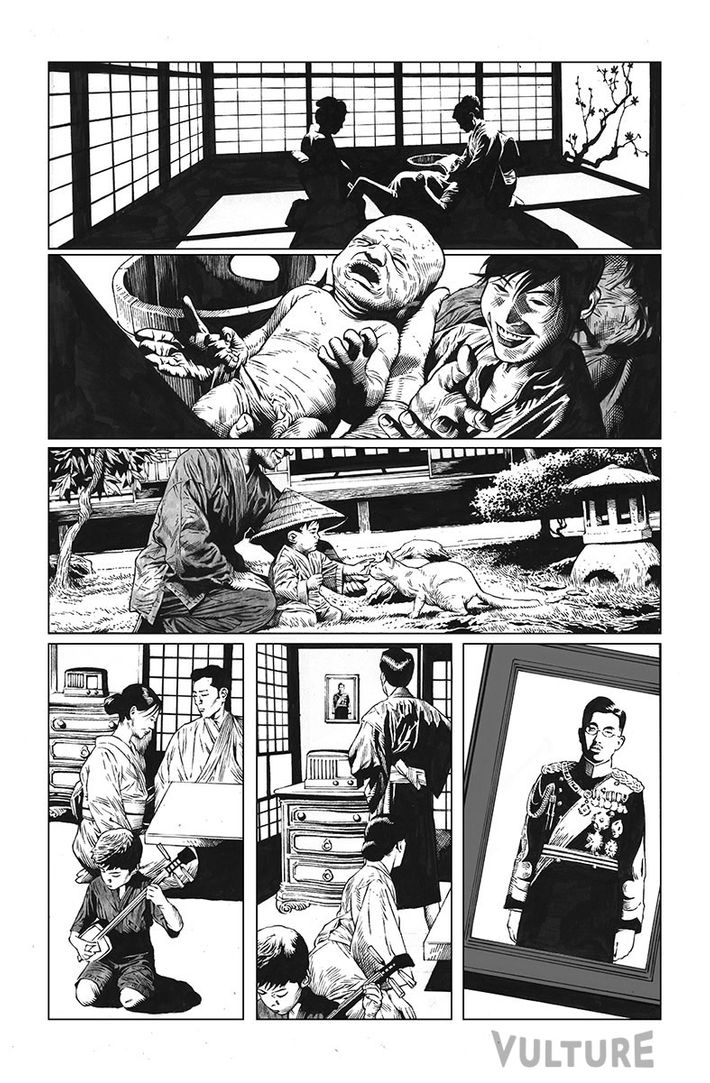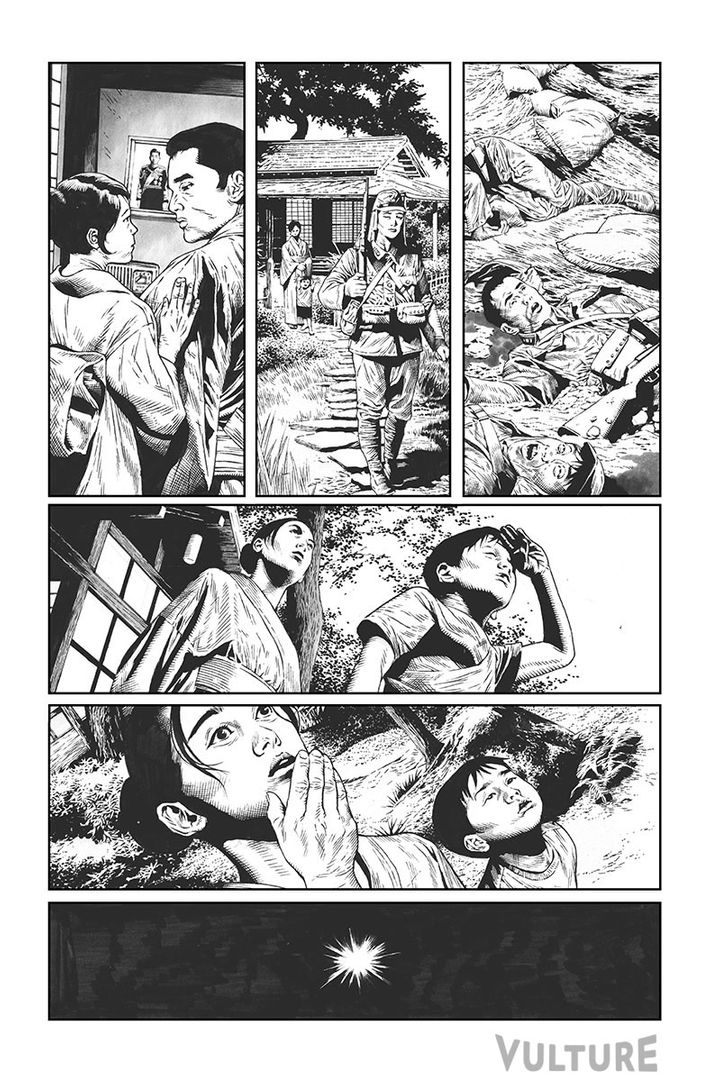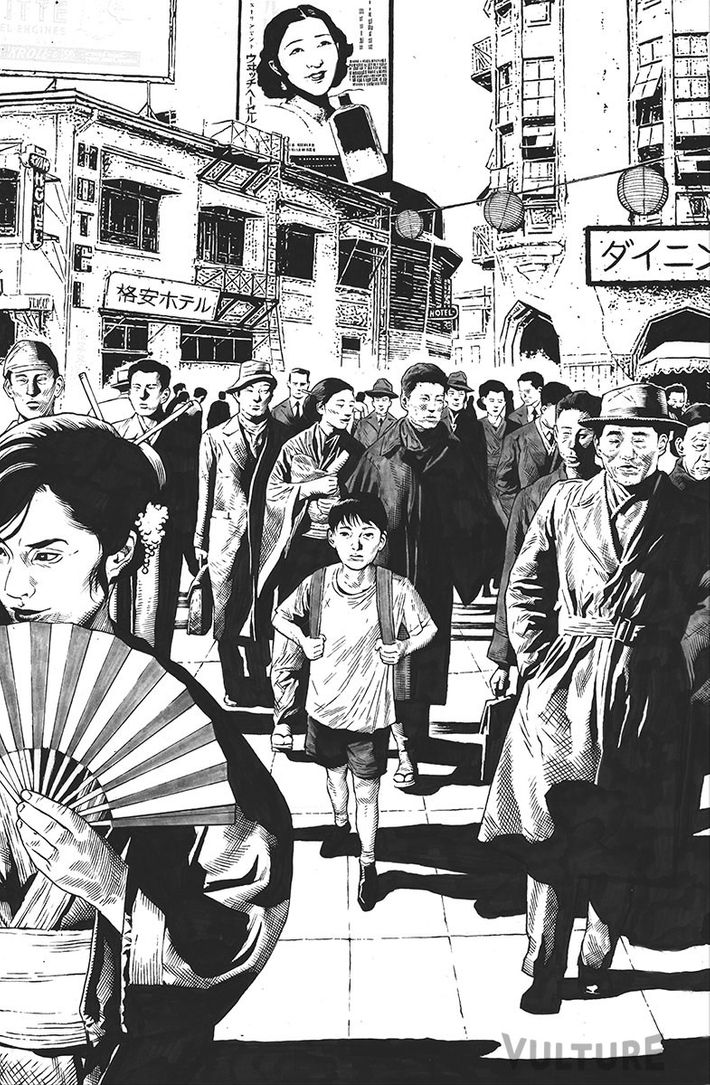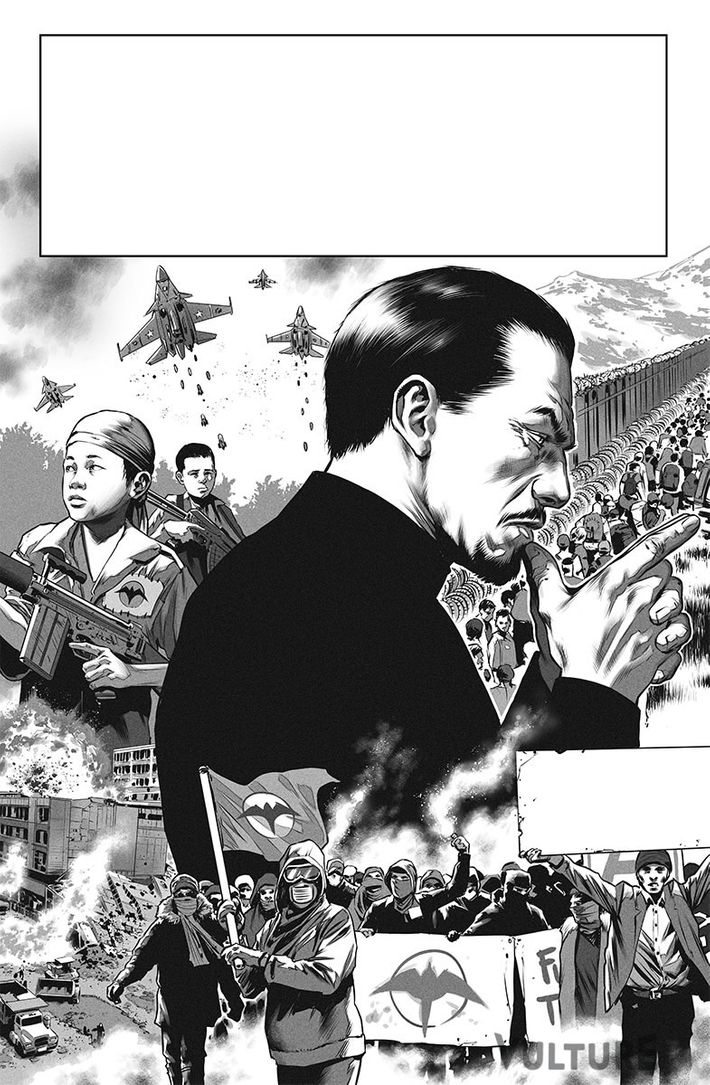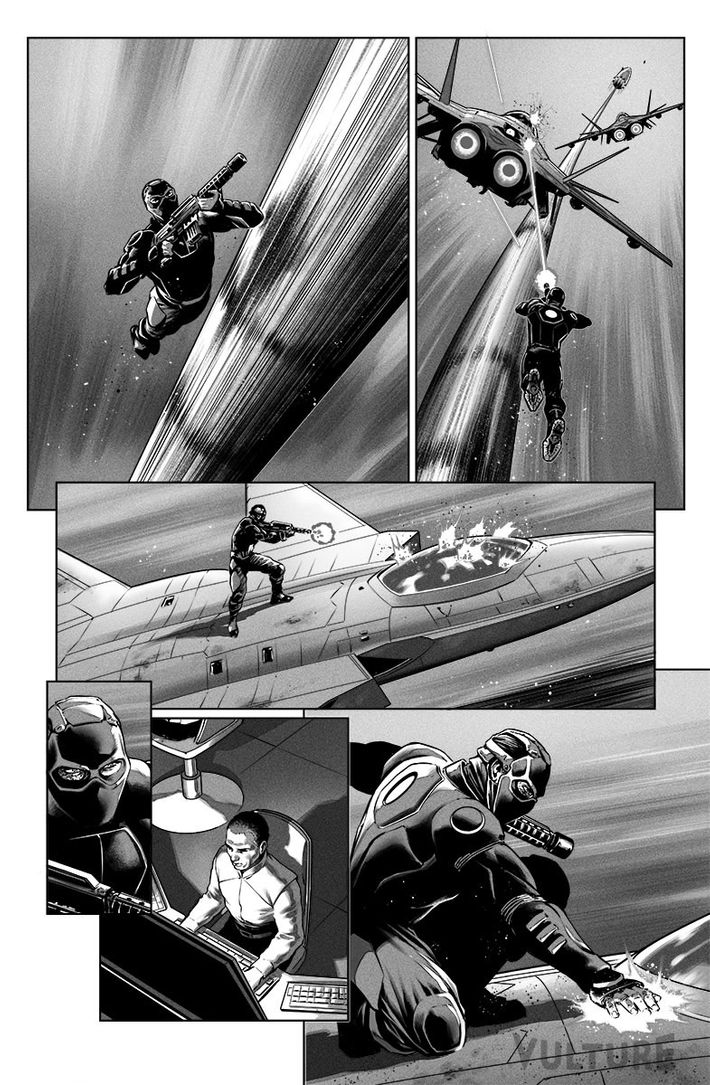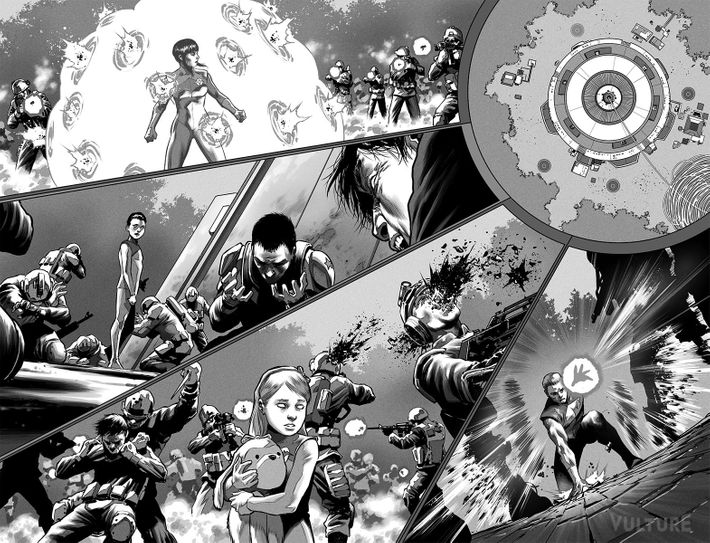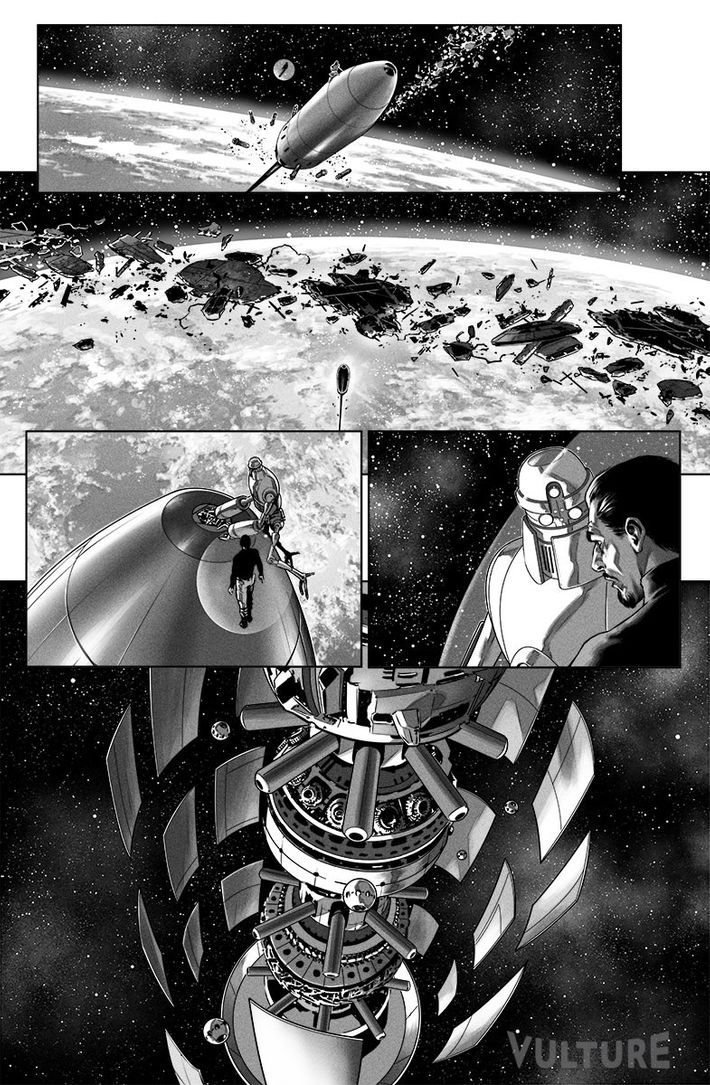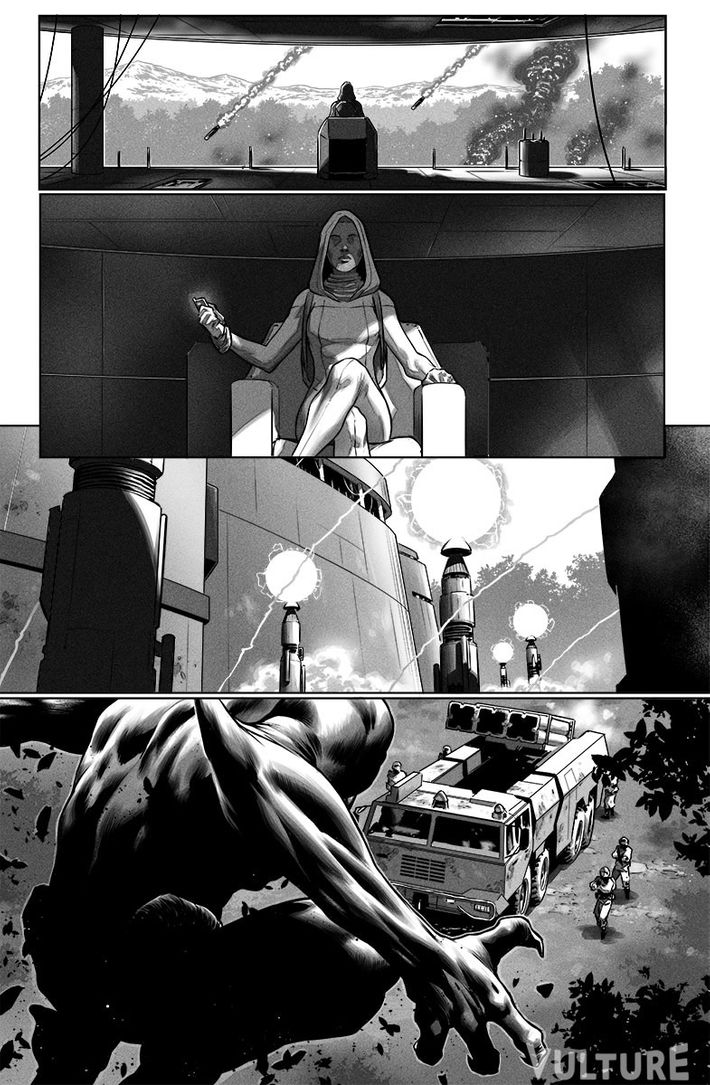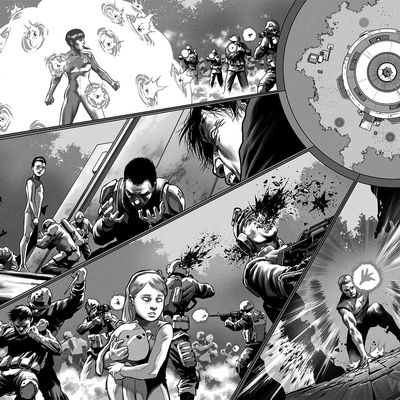
Very often, the best antagonists in superhero fiction are the ones who just might be right. Dr. Doom probably would be pretty good at running the world. Ra’s al Ghul and Poison Ivy are both pretty much on the money when they say human beings are destroying the ecosystem. As we’ve all learned in the past weekend, Erik Killmonger makes solid points about racial injustice. And Valiant Entertainment’s superpowered mastermind Toyo Harada? “He’s essentially a socialist living at the height of capitalism,” says Valiant editor-in-chief Warren Simons. “He’s a socialist with a cause. He’s going to bring peace to humanity by any means necessary other than war.” In an age of forever wars and growing global income inequality, there are more than a few comics readers who might find such a villain more than a little persuasive.
But yeah, about that whole “other than war” thing — the powers that be don’t exactly cotton to a metahuman with a message of global economic revolution, and it looks like the war has come to him. Starting in early 2019, Valiant will release a six-part mini-series entitled The Life and Death of Toyo Harada, in which the title character heads into a titanic battle against many of the world’s governments while the reader gets clues about his past. It will be written by longtime Harada storyteller Joshua Dysart, with sequences set in the present day drawn by CAFU; flashbacks drawn by a rotating cast of artists including Lewis LaRosa, Adam Pollina, and Mico Suayan; and cover artwork by Butch Guice with Diego Rodriguez.
“In a way, it’s the culmination of my entire time at Valiant Entertainment,” says Dysart of the series. His time there has spanned the entirety of the current iteration of Valiant, a company with one of the most curious backstories the industry has ever seen. The first version of Valiant was founded at the turn of the 1990s by former Marvel EIC Jim Shooter. It launched a new, interconnected universe of fresh characters like time-displaced Visigoth X-O Manowar; hypercompetent ninja Ninjak; ultrawarrior Bloodshot; and the superhuman teenagers of a series called Harbinger, which developed the original version of Harada. Valiant went went belly-up a few years later and was fully rebooted in 2012 under the aegis of Valiant superfan Dinesh Shamdasani. The company has been putting out acclaimed comics and developing filmed adaptations since then, and was recently acquired by media firm DMG Entertainment.
The Life and Death of Toyo Harada is one of the first major “event” comics to be announced in the DMG era, after this summer’s Harbinger Wars 2, but the former won’t be a formal sequel to the latter. Indeed, both Simons and Dysart emphasize that Life and Death is intended to be accessible to folks who’ve never picked up a Valiant comic in their lives. “To the uninitiated reader, it’ll come off as sort of a maximalist epic, complete with global politics and huge doses of character-driven pulp sci-fi,” says Dysart.

The story picks up after the events of the Dysart-penned Harbinger and Imperium series, both of which prominently featured Harada. He’s a near-immortal “psiot” — a human born with monumental abilities — who was once a secretive billionaire and philanthropist. He ran a program to find and train young psiots, but his undemocratic, megalomaniacal mind-set has led to repeated attacks against him from the heroes of the Valiant universe. In recent years, he went from being a behind-the-scenes kingmaker to a major global figure, attempting to correct economic injustice by empowering the developing world against the global superpowers. But don’t worry too much about all that. “You only need to know two things,” says Dysart. “One: There is a ring of alien technology that now orbits the earth in the Valiant Universe. These are the remnants of an invading alien fleet that was destroyed a few years ago in our continuity. And two: Toyo Harada’s defiance against the G8 economies has galvanized an approaching global war that is dividing the world, not by ideological or geographical lines, but along economic sustainability lines.”
The subsequent narrative has been heavily influenced by Dysart’s travels in crisis zones around the world. “Since writing him, I’ve engaged more with the geopolitical landscape,” he says. “Spent more time in the Islamic world interviewing people and hearing their stories, places like Algeria and Pakistan. I saw the birth of the migrant crises while I was in northern Iraqi Kurdistan in 2014, and also watched a government in meltdown crisis in South Sudan as I traveled the length of it in 2016.” Though he’d been writing Harada since the early part of the decade, he says such journeys made him think about how the character needed to evolve: “His anger became more acute, his actions more desperate, his vision more utopist. He’s really turned into a kind of dark fantasy of mine.”
That fantasy will be illustrated by a team of artists that fit into a recurring Valiant strategy: buy low, sell high. The small company has traditionally adopted a Moneyball-esque approach to its talent-hunting by seeking out creators who aren’t big names, but who it thinks hold raw talent. “CAFU’s wonderful,” says Simons. “Wonderful storyteller. Everything that hits the page is clean and crisp. He’s great at doing bombastic action as well.” Dysart is similarly praising of CAFU, but highlights the art of the flashbacks, as well. Those sequences begin with Harada’s psiot awakening in Japan in the midst of an atomic blast, and Dysart thinks they look gorgeous. “[CAFU]’s going to be sharing space with illustrative gods like Lewis LaRosa, Mico Suayan, and others, all of whom have made such deep impressionable work over the course of our ‘Psiot Cycle,’” he says.
That’s all well and good, but the big question is: Will Harada actually die, as the title of the series implies? Neither Simons nor Dysart gets into details. (“Josh came up with a pretty crafty ending that will be fodder for stories for some time,” says Simons.) Either way, Dysart seems energized by the chance to take one last spin with his muse. “I give [Harada] my most radical politics. Then I take my absolute worst fears,” he says. “They are that democracy doesn’t actually work, and that there is no progress without violence. I’m not saying I believe in those things, I’m saying I fear those things are true. Then, I make him believe those things fully. Lastly, I move him to action in a way I could never do myself. I might believe in something, but I’ve never found an idea worth killing for. Harada doesn’t have that problem. He’s my bleakest angel, my own inner dictator. And when I’m writing him at his most honest, or maybe my most honest, I can’t really say he’s wrong.”
Check out some exclusive previews from the first issue below:
